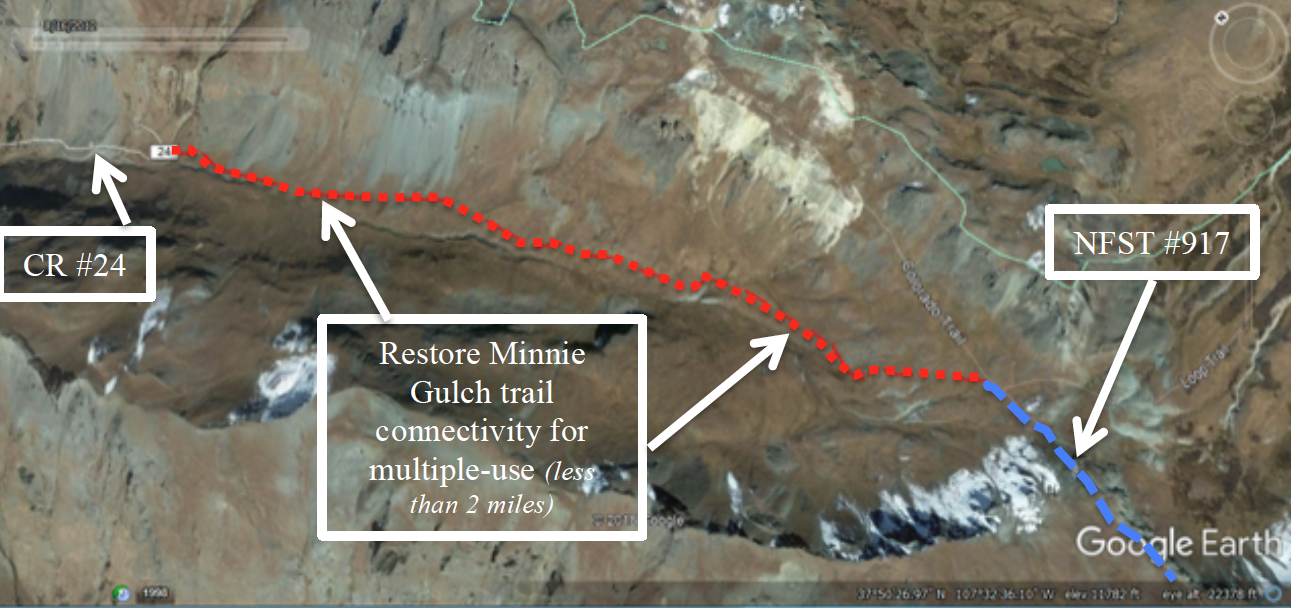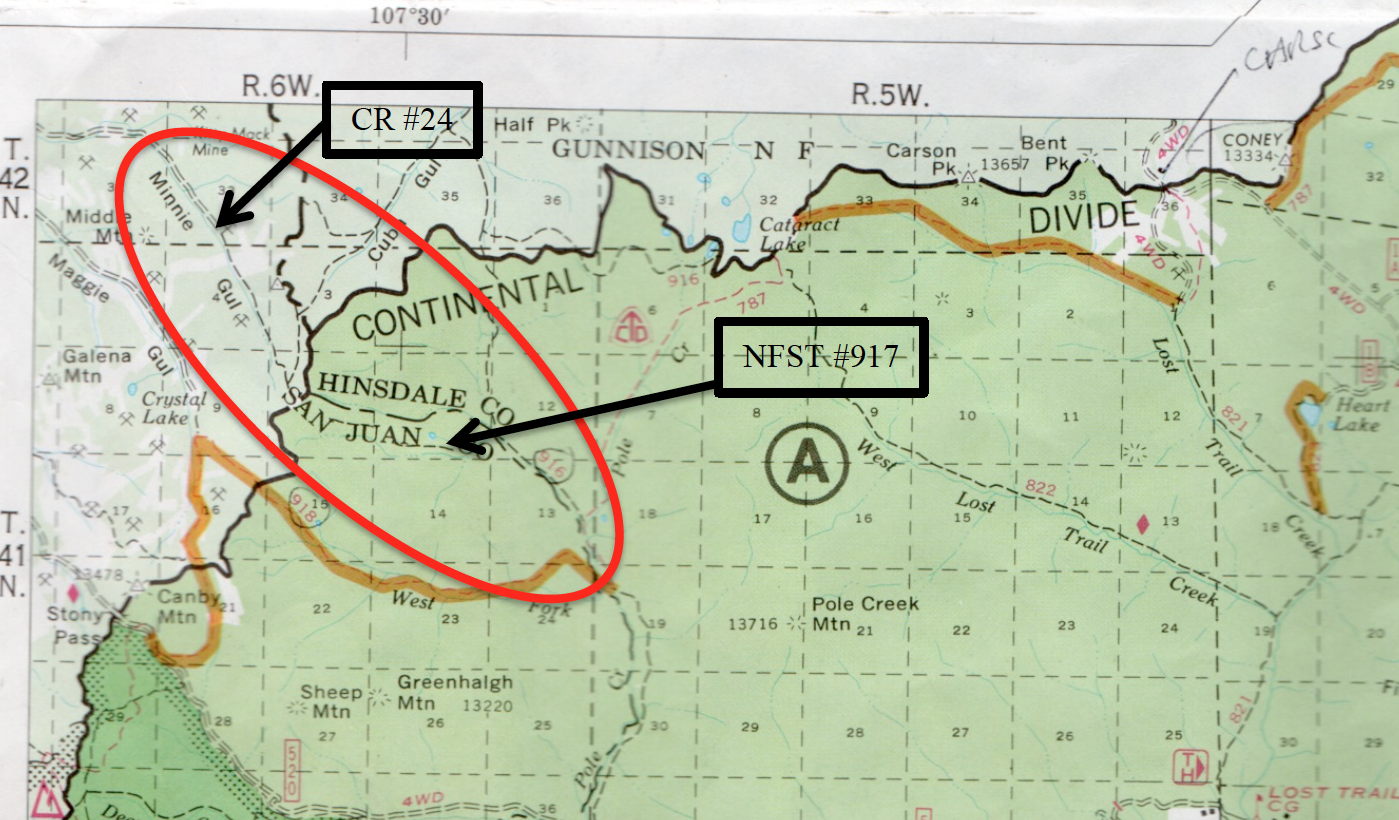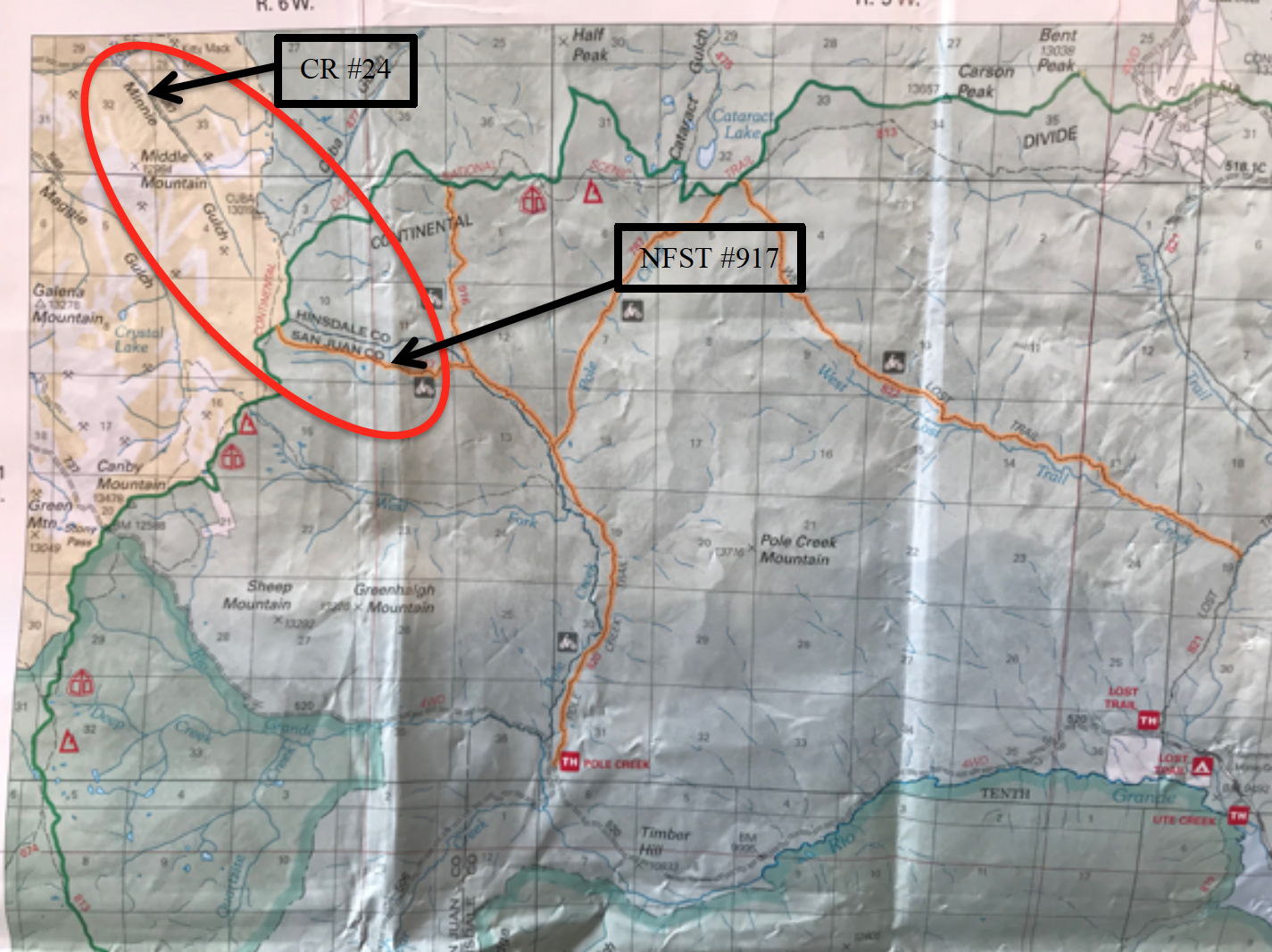Delivered via email to ewaters@blm.gov
Elijah Waters Field Manager
BLM Gunnison Field Office Gunnison, CO 81230
SUBJECT: Public input to the Bureau of Land Management, Gunnison Field Office, Travel Management Plan
Dear Mr. Waters:
Please accept these comments on behalf of the Trails Preservation Alliance (TPA), the San Juan Trail Riders (SJTR) and the Public Access Preservation Association (PAPA).
These comments are being provided as public input to the recently announced Bureau of Land Management (BLM), Gunnison Field Office (GFO), Travel Management Planning (TMP) project. Prior to addressing our specific TMP comments, we believe a brief description of each organization is necessary to provide context to our comments and request.
The TPA is a Colorado nonprofit corporation. The TPA is a volunteer organization created to be a viable partner to public lands managers, working with both the United States Forest Service (USFS) and the BLM to preserve the sport of trail riding and multiple- use recreation. The TPA acts as an advocate for the sport and takes the necessary action to insure that the USFS and BLM allocate a fair and equitable percentage of public lands access to diverse multiple-use recreational opportunities. TPA members have used, and hope in the future to use, motorized and non-motorized means, including off-highway vehicles, horses, mountain bikes, and hiking, to access federal lands throughout Colorado, including in the Gunnison Field Office’s area of responsibility. The TPA has been a long time partner with the Colorado staff of the BLM and has worked together with other BLM Field Offices to improve and enhance multiple-use recreational opportunities and experiences for the public.
SJTR is a Colorado nonprofit corporation with approximately 400 members. SJTR is based in Durango and its members are primarily from Colorado. SJTR goals and purposes include providing an organized network for trail enthusiasts, to promote active participation in off-highway vehicle management, to maintain a focused dialogue with the local land mangers, to educate trail users about “Tread Lightly” and other trail conservation practices, and to encourage cooperation and coordination between user groups and land managers. SJTR members regularly use public lands throughout Colorado, including the Gunnison Field Office’s area, for recreational and aesthetic purposes including off-highway vehicle, motorcycle, mountain bike, equestrian, or hiking travel on trails or primitive roads.
PAPA is a Colorado nonprofit corporation with approximately 300 participants. PAPA is based in Telluride and its members are primarily from Colorado. PAPA protects and promotes public land access, primarily through advocacy and on-the-ground support such as volunteering for trail projects, event support or similar activities as authorized by the USFS, BLM and other partners. PAPA members regularly use public lands throughout Colorado, including the Gunnison Field Office’s area, for recreational and aesthetic purposes including off-highway vehicle, motorcycle, mountain bike, equestrian, or hiking travel on trails or primitive roads.
Our collective comments are primarily focused on the Silverton area and specifically to an area north of Silverton, Colorado called the Minnie Gulch area.
Background: Until at least 1996, a trail measuring approximately 1.75 miles connected San Juan County Road #24 (CR #24) and National Forest System Trail (NFST #917), and was open to motorized use. This connection was important for creating a loop with the motorized singletrack trails in the area on the USFS Divide Ranger District (DRD) of the Rio Grande National Forest (RGNF) and offering another access point to the high country. This trail was closed to multiple-use travel around 1997. Our organizations have been unable to collectively ascertain the reason for the closure nor the process that was used to effect the change. NFST #917 remains open to multiple-use within the jurisdiction of the DRD.
Proposal and Recommendations: Our organizations request that multiple-use single–track access, specifically motorcycle access be restored on the approximately 1.75 mile section between the end of CR #24 and NFST #917 as depicted in the aerial photograph provided below. CR #24 and NFST #917 are already multiple-use. Our organizations will be willing to request grant funding for opening the trail, and are willing to adopt the trail for ongoing maintenance and upkeep. This action will likewise enhance and re-establish the trail to hardy mountain bike cyclists as well.

Below is an excerpt of the 1996 Rio Grande National Forest, Recreation Map which shows the trail that is the subject of this discussion, open to motorized/multiple-use recreation between the Minnie Gulch Road/CR #24 and NFST #917 in the RGNF.

The following map shows the current RGNF trails in the area, with the motorized routes highlighted.

The organizations are aware that there could be concerns regarding the crossing of the Continental Divide National Scenic Trail (CDNST)/Colorado Trail by an intermittently used multiple-use, single-track trail. However, the Continental Divide National Scenic Trail (CDNST) Comprehensive Plan from 2009 specifically allows for motor vehicle routes to cross the CDNST, and that motor vehicle use (i.e. motorcycle use) was allowed to cross this portion of the CDNST prior to November 19781. Furthermore, existing multiple-use trail NFST #917 intersects the CDNST. It should also be noted that NFST #787 (AKA Pole Creek) and NFST #822 (AKA Lost Creek) both intersect with the CDNST just South of Cataract Lake, and both NFSTs #916 and #917 currently dead end at the CDNST. These junctures have existed and been in place for decades without problems or conflicts. The organizations therefore believe that a properly signed crossing of the CDNST from Minnie Gulch to NFST #917 will not present a problem.
Financial and Volunteer Support: Our organizations are committed to working closely with the GFO to restore this access for multiple-use, specifically motorcycles, through adopting the restored trail by SJTR for maintenance purposes and by securing future Colorado Parks & Wildlife, Off-Highway Vehicle (OHV) grants as needed. The organizations have provided single-track gates/width restrictors and signage in the past to ensure compliance with travel plans, and would be happy to do so in this case as well. The organizations are willing and prepared to provide fair and reasonable financial support, should the need arise, to purchase easements, mine claims or rights-of-way to facilitate the restoration of this proposed multiple-use access from the end of CR #24 in Minnie Gulch to NFST #917 in the DRD of the RGNF. However, we would contend that a specific easement is not required as the existing use by the County and the existence of the current trail and uses across mining claims and properties in the immediate area more than adequately satisfies the Colorado definition of a “Prescriptive Easement” (i.e., A prescriptive easement is one upon another’s property without the property owner’s consent for a period of 18 years. That the existing and past use is and has been “open and notorious”, continuous and adverse for at least 18 years). Our organizations are also willing to contribute funds for management items such as signage, trail construction materials, etc. and a suitable level of volunteer labor and resources to restore this trail to a sustainable condition appropriate for multiple-use (i.e. single-track motorcycle use).
Summary
The Trails Preservation Alliance (TPA), the San Juan Trail Riders (SJTR) and the Public Access Preservation Association (PAPA) collectively request that the Bureau of Land Management (BLM), Gunnison Field Office (GFO), restore multiple-use, single–track access, specifically motorcycle access between the end of Minnie Gulch, San Juan County Road #24 and National Forest System Trail #917, which currently terminates at the jurisdictional border with the Divide Ranger District of the Rio Grande National Forest.
Thank you for your consideration of our comments. Together in partnership with the Gunnison Field Office we hope to help develop a Travel Management Planning that is responsive to user needs, provides sustainable multiple-use recreational opportunities and protects the resources of the GFO. The organizations would welcome a discussion of these recommendations at your convenience. Our point of contact for this project will be Mr. Allen Christy of the SJTR, allencchristy@gmail.com. Questions regarding funding or our organizations level of commitment to re-opening this route to multiple-use and specifically motorcycles should be directed to the undersigned at info@coloradotpa.org or 719-338-4106.
Sincerely,
D.E. Riggle
Director of Operations Trails Preservation Alliance
cc: SJTR, Allen Christy PAPA
Divide Ranger District, Rio Grande National Forest
1 See, USDA Forest Service; The 2009 Continental Divide National Scenic Trail Comprehensive Plan; September 2009 at pgs. 19-20.
